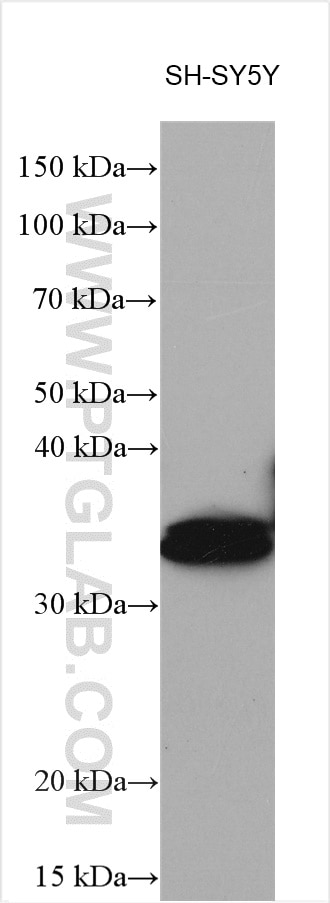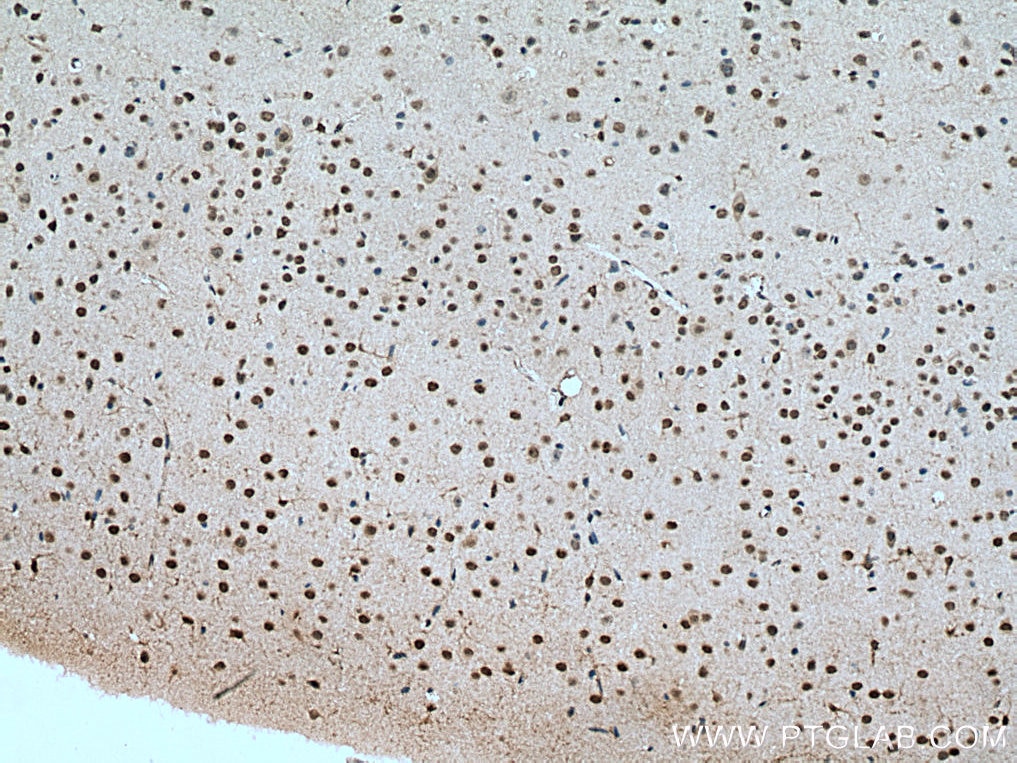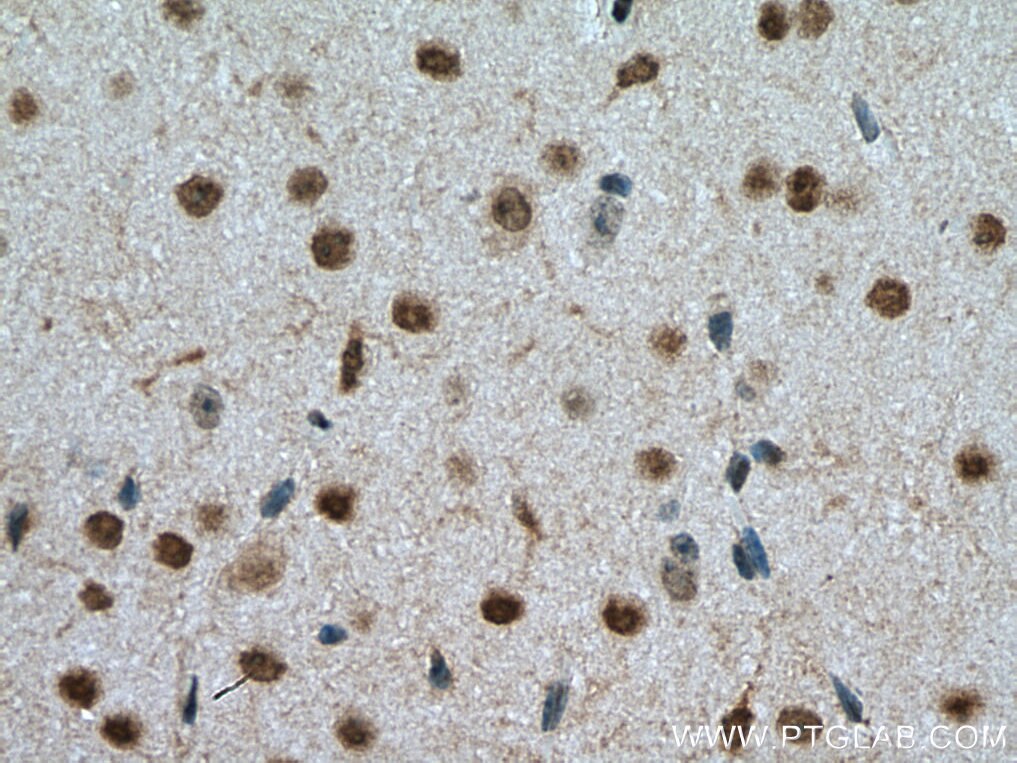- Phare
- Validé par KD/KO
Anticorps Polyclonal de lapin anti-DBP
DBP Polyclonal Antibody for WB, IHC, ELISA
Hôte / Isotype
Lapin / IgG
Réactivité testée
Humain, rat, souris et plus (1)
Applications
WB, IF, IHC, ELISA
Conjugaison
Non conjugué
N° de cat : 12662-1-AP
Synonymes
Galerie de données de validation
Applications testées
| Résultats positifs en WB | cellules SH-SY5Y, |
| Résultats positifs en IHC | tissu cérébral de souris, il est suggéré de démasquer l'antigène avec un tampon de TE buffer pH 9.0; (*) À défaut, 'le démasquage de l'antigène peut être 'effectué avec un tampon citrate pH 6,0. |
Dilution recommandée
| Application | Dilution |
|---|---|
| Western Blot (WB) | WB : 1:500-1:1000 |
| Immunohistochimie (IHC) | IHC : 1:50-1:500 |
| It is recommended that this reagent should be titrated in each testing system to obtain optimal results. | |
| Sample-dependent, check data in validation data gallery | |
Applications publiées
| KD/KO | See 1 publications below |
| WB | See 6 publications below |
| IHC | See 2 publications below |
| IF | See 2 publications below |
Informations sur le produit
12662-1-AP cible DBP dans les applications de WB, IF, IHC, ELISA et montre une réactivité avec des échantillons Humain, rat, souris
| Réactivité | Humain, rat, souris |
| Réactivité citée | rat, Humain, poulet, souris |
| Hôte / Isotype | Lapin / IgG |
| Clonalité | Polyclonal |
| Type | Anticorps |
| Immunogène | DBP Protéine recombinante Ag3343 |
| Nom complet | D site of albumin promoter (albumin D-box) binding protein |
| Masse moléculaire calculée | 325 aa, 34 kDa |
| Poids moléculaire observé | 34 kDa |
| Numéro d’acquisition GenBank | BC011965 |
| Symbole du gène | DBP |
| Identification du gène (NCBI) | 1628 |
| Conjugaison | Non conjugué |
| Forme | Liquide |
| Méthode de purification | Purification par affinité contre l'antigène |
| Tampon de stockage | PBS avec azoture de sodium à 0,02 % et glycérol à 50 % pH 7,3 |
| Conditions de stockage | Stocker à -20°C. Stable pendant un an après l'expédition. L'aliquotage n'est pas nécessaire pour le stockage à -20oC Les 20ul contiennent 0,1% de BSA. |
Protocole
| Product Specific Protocols | |
|---|---|
| WB protocol for DBP antibody 12662-1-AP | Download protocol |
| IHC protocol for DBP antibody 12662-1-AP | Download protocol |
| Standard Protocols | |
|---|---|
| Click here to view our Standard Protocols |
Publications
| Species | Application | Title |
|---|---|---|
Sci Adv Time-restricted feeding prevents deleterious metabolic effects of circadian disruption through epigenetic control of β cell function. | ||
Theranostics PPAR-γ integrates obesity and adipocyte clock through epigenetic regulation of Bmal1. | ||
FASEB J Rhythmic expression of miR-27b-3p targets the clock gene Bmal1 at the posttranscriptional level in the mouse liver. | ||
Commun Biol ISX-9 potentiates CaMKIIδ-mediated BMAL1 activation to enhance circadian amplitude. | ||
Sci Rep Gene expression profiles during tissue remodeling following bladder outlet obstruction.
| ||
Animals (Basel) Renal Endocytic Regulation of Vitamin D Metabolism during Maturation and Aging in Laying Hens |




